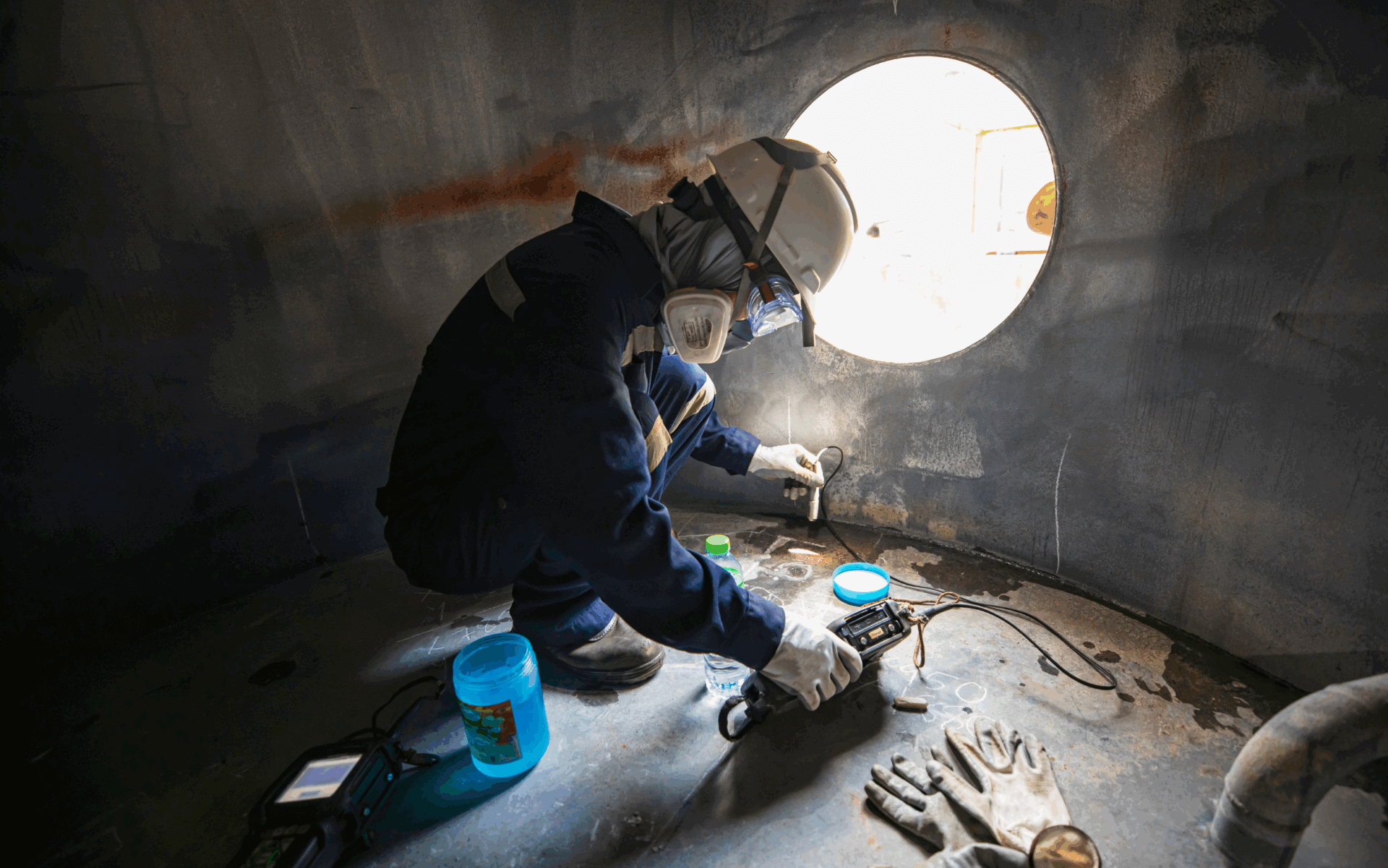Working in confined spaces comes with unique and often deadly risks. Whether it’s a tank, tunnel, vault, or pit, understanding the dangers and regulatory requirements is essential for keeping your team safe. This confined space toolbox talk outlines how to identify permit-required spaces, assess hazards, and follow essential safety procedures before entry.
What is a Confined Space?
A confined space is defined as an area that is large enough for a worker to enter and perform assigned tasks, has limited or restricted means for entry or exit, and is not designed for continuous occupancy. These characteristics make confined spaces uniquely dangerous because they can quickly become deadly traps if hazards arise.
Confined spaces include places like manholes, tanks, tunnels, silos, crawlspaces, and pipelines—any enclosed or partially enclosed environment where hazards like toxic gases, low oxygen, or engulfment may be present. While not all confined spaces are inherently dangerous, they become high-risk when hazards exist or are introduced. Understanding these risks is the first step in keeping workers safe.
What is a “Permit-Required” Confined Space?
A permit-required confined space (PRCS) is a confined space that meets one or more of the following criteria:
- A hazardous atmosphere (e.g., toxic gases, low oxygen, flammable vapors)
- A material that could engulf a worker
- Walls that converge inward or floors that slope downward and could trap or asphyxiate
- Any other serious safety or health hazard (e.g., mechanical hazards, extreme temperatures)
If a confined space meets these criteria, all of the OSHA requirements—including permits, atmospheric testing, retrieval systems, and rescue planning—become mandatory. Per OSHA Standard 29 CFR 1910.146, employers must develop a written program, post signage, conduct atmospheric testing, and use a permitting system before workers enter a PRCS. OSHA’s construction standard (CFR 19.261203) takes it further by requiring coordination between multiple employers, more extensive pre-entry planning, and continuous reevaluation of space hazards, due to the dynamic nature of construction work.
In summary:
- PRCS = Full OSHA compliance required
- Non-PRCS = Limited requirements, but still requires evaluation and hazard controls
- Construction = Higher emphasis on coordination and hazard reassessment
Common Hazards
Every confined space carries a unique risk profile based on its location, contents, and purpose—but many of the dangers are predictable and deadly. Understanding these hazards is the first step toward implementing safe entry protocols and preventing tragic outcomes.
Hazards vary by space, but common dangers include:
- Oxygen deficiency or enrichment
- Flammable or toxic gas buildup
- Engulfment by liquids or loose materials
- Electrical shock or entanglement from equipment
- Temperature extremes or poor ventilation
- Unexpected activation of machinery
Each of these hazards can arise quickly and without warning, making hazard recognition and atmospheric testing essential.
| Real-World Reminder |
|---|
According to the 2020 report from the Bureau of Labor Statistics (BLS), 1,030 workers in the U.S. died from occupational injuries involving a confined space between 2011 and 2018. While more recent reports are showing double-digit decreases in confined space-related incidents, it still remains a significant safety concern.
These were preventable deaths—and they highlight exactly why you should be having this conversation with your crew today. |
The 7 Golden Rules of Confined Spaces
Confined space entry requires more than just good intentions; it demands discipline, procedure, and a firm respect for the risks involved. These seven “golden rules” represent industry best practices and regulatory requirements that every crew should know by heart.
1. Never enter without a permit (if required)
2. Test the atmosphere before and during entry
3. Ventilate the space to remove harmful gases
4. Wear required PPE and use a harness
5. Assign a trained attendant to monitor from outside
6. Maintain constant communication
7. Have a rescue plan ready and practiced
That last point is critical. According to a Canadian resource, an estimated 60% of confined space fatalities involve would-be rescuers—coworkers who enter without proper equipment, training, or awareness of the hazards. A rescue plan isn’t just a formality—it’s a life-saving requirement.

PPE Requirements
Personal protective equipment (PPE) is your last line of defense in a confined space. The right gear is essential for reducing the severity of exposure to atmospheric hazards, engulfment risks, and physical injuries. PPE should be selected based on a thorough hazard assessment conducted before entry.
Depending on the space and task, required PPE may include:
- Full-body harness and lifeline (retrieval system)
- Respirators or supplied-air systems
- Chemical-resistant clothing or gloves
- Hard hats, safety goggles, and protective footwear
- Intrinsically safe lighting and communication equipment
Remember, PPE must be inspected before each use and properly maintained to ensure it offers full protection.
Confined Spaces Safety Tips
Beyond meeting OSHA’s regulatory standards, good safety practices are what keep workers alive and jobsites running smoothly. These tips help reinforce a strong confined space entry culture—and should be revisited often through toolbox talks, training, and job hazard analyses.
- Review the confined space permit before every entry
- Confirm training and authorization for all workers
- Assess every space, control every hazard, equip every worker
- Never work alone—always have an attendant
- Follow lockout/tagout procedures
- Review rescue plans with the team
- Keep retrieval systems in place and functional
- Log each entry and exit—don’t skip documentation
No matter how routine a task might seem, confined spaces are never business-as-usual.
Final Thoughts
Every year, workers lose their lives in confined spaces due to poor planning, lack of awareness, or rushing the job. Always treat confined spaces as high-risk environments. Follow your permit procedures, communicate constantly, and never enter a space without the right training and equipment.
